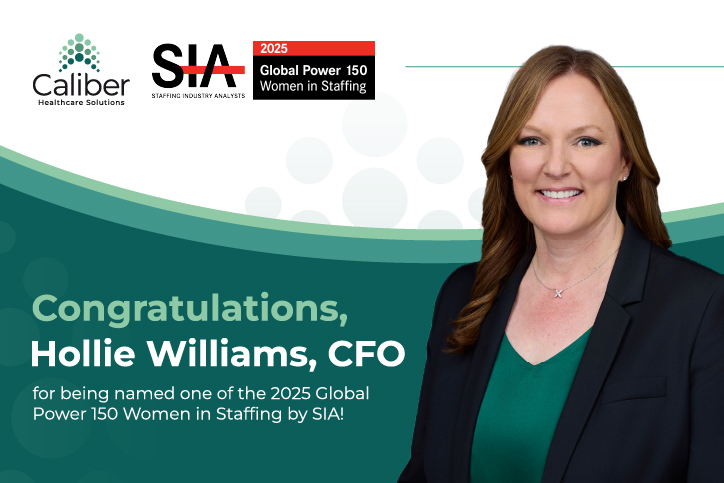
The demand for CRNAs is rising sharply, driven by an aging population and an increase in surgical procedures. Coupled with the ongoing shortage of skilled anesthesia professionals, this is a critical issue that affecting patients.
CRNAs are proving to be invaluable not only for their expertise in delivering anesthesia care but also for their ability to do so more independently. Recent changes in state laws and regulations now allow CRNAs to work to the full extent of their training, which is crucial in helping alleviate the shortage. This is especially significant in operating rooms, which are not only a high-stress environment but also a primary income source for hospitals, accounting for about 60% of a facility's revenue. Ensuring these areas are well-staffed with a skilled anesthesia team is vital for maintaining a hospital's financial health and ensuring continuous patient care.
With the focus on enhancing recruitment and retention strategies, healthcare leaders recognize the critical role CRNAs play. That means that as a CRNA, your skills are more sought after than ever, opening up numerous opportunities to advance in your career and make a substantial impact in your field.
The shortage of anesthesia providers is a pressing concern for healthcare organizations across the country. By 2033, it's projected that the anesthesiology workforce could face a shortfall of about 12,500 professionals, which would amount to nearly 22% of the current staff.
Data from the American Association of Nurse Anesthetists highlights a significant discrepancy between the demand for certified registered nurse anesthetists and the number of available practitioners. This gap is especially acute in rural and underserved areas, where some facilities report more than 30% of anesthesia positions remain unfilled.
The CRNA staffing crisis is escalating, posing significant challenges for healthcare administrators who are struggling to ensure adequate coverage in both urban and rural facilities. This growing deficit is exacerbated by an aging workforce; about 40% of current CRNAs are expected to retire in the next ten years, and the number of new graduates from accredited programs cannot meet the demand.
Several key factors contribute to this shortage:
Healthcare providers face significant operational challenges due to the anesthesia care shortage. Emergency medicine departments experience delays, surgical schedules face disruption, and human resources departments struggle with recruitment and retention. The financial impact is substantial, straining budgets while healthcare leaders attempt to maintain quality care standards.
Patients in rural areas experience the most severe effects of this shortage. Wait times for surgical procedures have increased by 35% in some regions, and access to emergency anesthesia services is limited. Healthcare organizations report that employees feel increased pressure to maintain service levels and care for patients, leading to higher rates of burnout that compound the staffing crisis.
The race to secure top anesthesia care talent is really heating up. As the shortage of anesthesia providers deepens, healthcare facilities are increasingly vying to attract and retain top-tier CRNAs and Anesthesiologists. This competitive environment is driven by a need to ensure high-quality patient care and operational efficiency, especially across surgical services. Hospitals and clinics are enhancing their employment offers with better compensation packages, flexible working conditions, and opportunities for professional development to attract skilled anesthesia professionals. These efforts are critical to alleviate the impact of the workforce shortage on service delivery and patient outcomes.
The noticeable shortage in anesthesia care is sparking some innovative responses. Training programs are ramping up their intake to educate more folks like us, and state legislatures are getting with the times by easing up on restrictive supervision requirements. This means more autonomy for CRNAs and anesthesiologists, which is always a win. Plus, more and more healthcare providers are teaming up with staffing agencies like Caliber to employ "locum tenens" providers and ensure they have the skilled professionals needed to keep things running smoothly.
Here at Caliber, we're all about connecting the dots between talented anesthesia providers and healthcare facilities with FTE vacancies. By leveraging strong relationships across the industry, we place professionals like you in roles where you're needed most. We understand the market inside and out, which means we’re pretty good at matching your skills with the right opportunities, making sure facilities get the support they need and you land a gig that fits your professional and personal goals.
Caliber puts you at the center of everything we do. We're here to find you a placement that ticks all your boxes, from the hourly rate to the location and procedural volume. Expect competitive pay and personalized support from our team every step of the way. From exploring opportunities to signing on the dotted line, we make the process as smooth as possible so you can focus on what you do best—providing top-notch anesthesia care.
Ready to take the next step? To discuss your career opportunities with Caliber, connect with a recruiter today.

Posted on
October 9, 2025
Caliber is proud to announce that our Chief Financial Officer, Hollie Williams, has been named to the Staffing Industry Analysts (SIA) 2025 Global Power 150 Women in Staffing list. This prestigious recognition honors women who are shaping the future of the staffing industry through innovation, leadership, and measurable impact.

Posted on
August 14, 2025
The OB/GYN workforce is at a pivotal moment. Demand is growing, especially in underserved regions. Meanwhile, retirements, burnout, and legislative pressure continue to shrink the supply of practicing physicians.

Posted on
August 10, 2025
The U.S. is experiencing a growing OB/GYN shortage that’s reshaping access to care for millions of women. In rural and urban communities alike, hospitals are closing labor and delivery units.

Posted on
October 9, 2025
Caliber is proud to announce that our Chief Financial Officer, Hollie Williams, has been named to the Staffing Industry Analysts (SIA) 2025 Global Power 150 Women in Staffing list. This prestigious recognition honors women who are shaping the future of the staffing industry through innovation, leadership, and measurable impact.

Posted on
October 2, 2025
We are proud to announce Allie Taylor, Corporate Counsel at Caliber Healthcare Solutions, has been recognized as a finalist for D CEO’s 2025 Corporate Counsel Award. Now in its 16th year, this prestigious program honors the top in-house attorneys across North Texas—an achievement that speaks volumes about Allie’s remarkable impact in the legal field.

Posted on
August 10, 2025
At Caliber, we believe Locum Tenens Week should be more than a weeklong celebration; it should be a spotlight on the long-term difference providers make every day. As a provider-centric organization, we know that when physicians and APPs are supported, their impact doesn’t just fill a gap, it transforms care for entire communities.This year’s NALTO theme, “Temporary Providers, Permanent Impact,” resonates deeply with us. Because while locum assignments are sometimes measured in weeks or months, the care delivered, and the trust built can span years and touch thousands of lives.

Posted on
January 20, 2025
Certified Registered Nurse Anesthetists’ (CRNAs) contributions to healthcare go far beyond the operating room. As leaders, innovators, and problem-solvers, they ensure patients receive the anesthesia and pain management care they need—even in the most challenging circumstances.

Posted on
November 22, 2024
As a certified registered nurse anesthetist (CRNA), finding work-life balance probably feels like chasing a mirage.

Posted on
November 22, 2024
With about 57,000 Certified Registered Nurse Anesthetists (CRNAs) delivering anesthesia care in hospitals, outpatient centers, and specialty clinics nationwide, the demand for Nurse Anesthetists has never been stronger.

Posted on
August 14, 2025
The OB/GYN workforce is at a pivotal moment. Demand is growing, especially in underserved regions. Meanwhile, retirements, burnout, and legislative pressure continue to shrink the supply of practicing physicians.

Posted on
August 12, 2025
Physicians in 2025 are facing rising workloads, shifting care team structures, and evolving career expectations. See the 4 biggest trends shaping the profession—and how locum tenens offers flexibility, balance, and control.

Posted on
August 12, 2025
For OB/GYNs, compensation is only one part of a complex equation that includes work-life balance, autonomy, and the ability to practice medicine on your own terms.